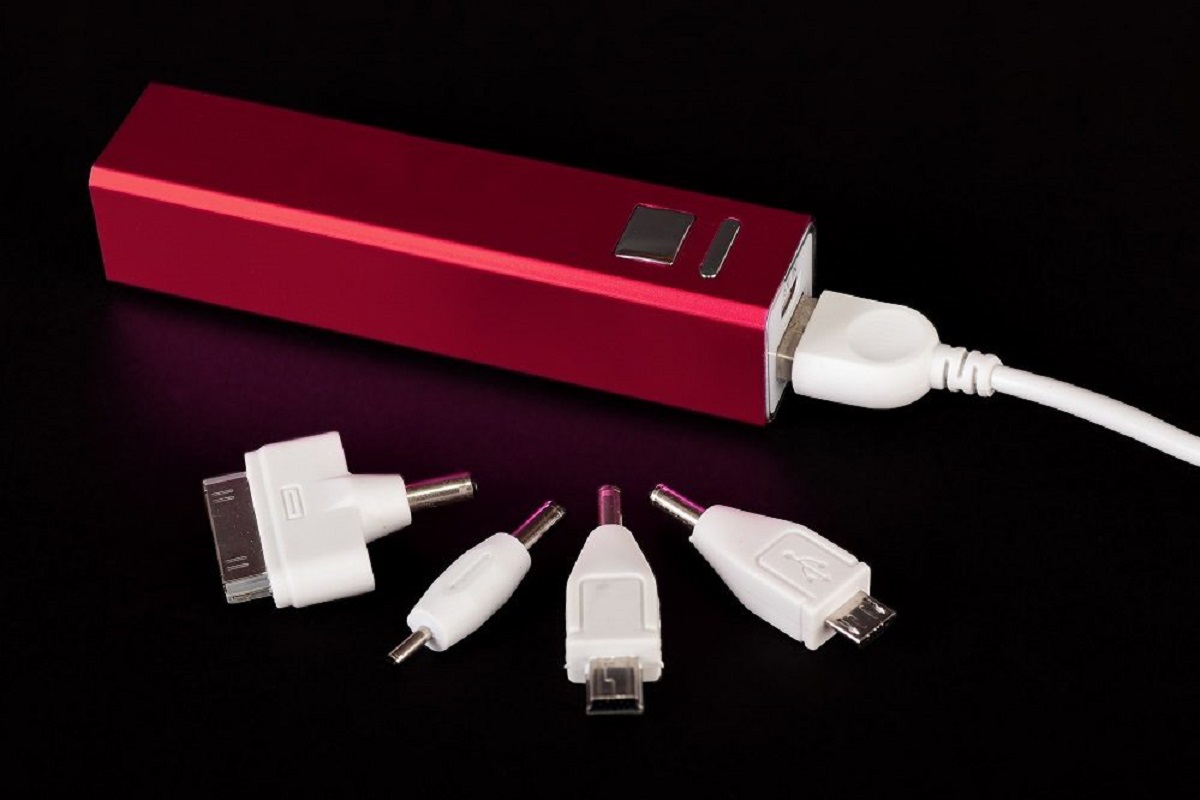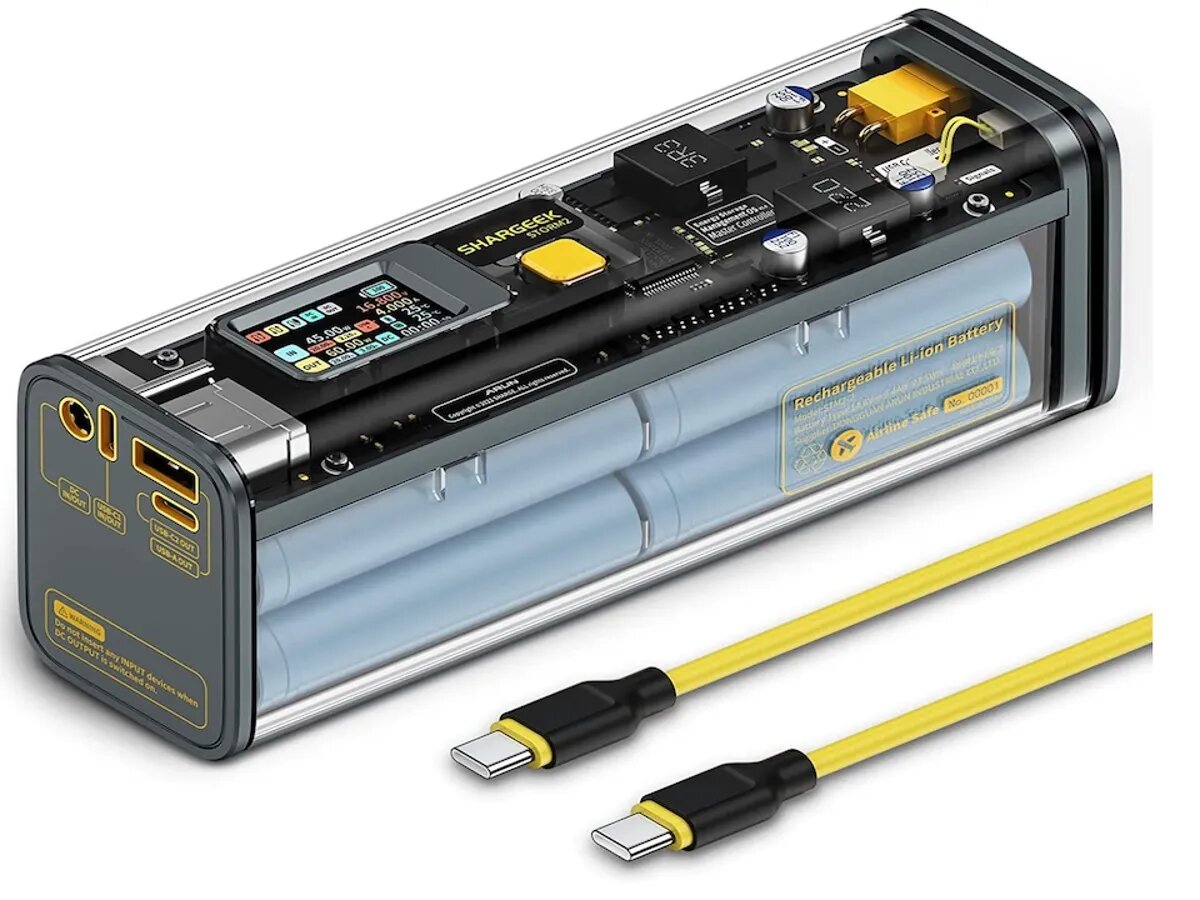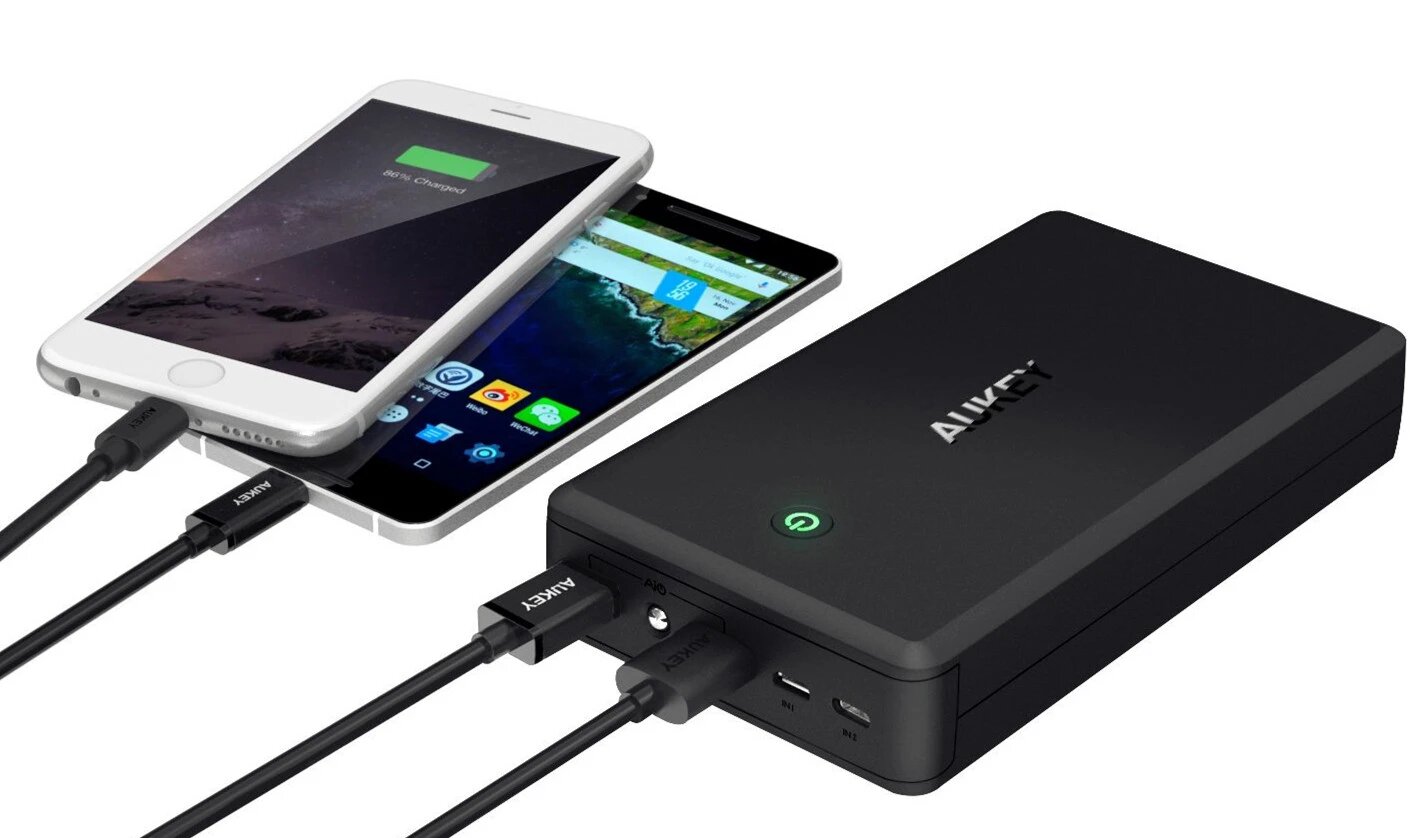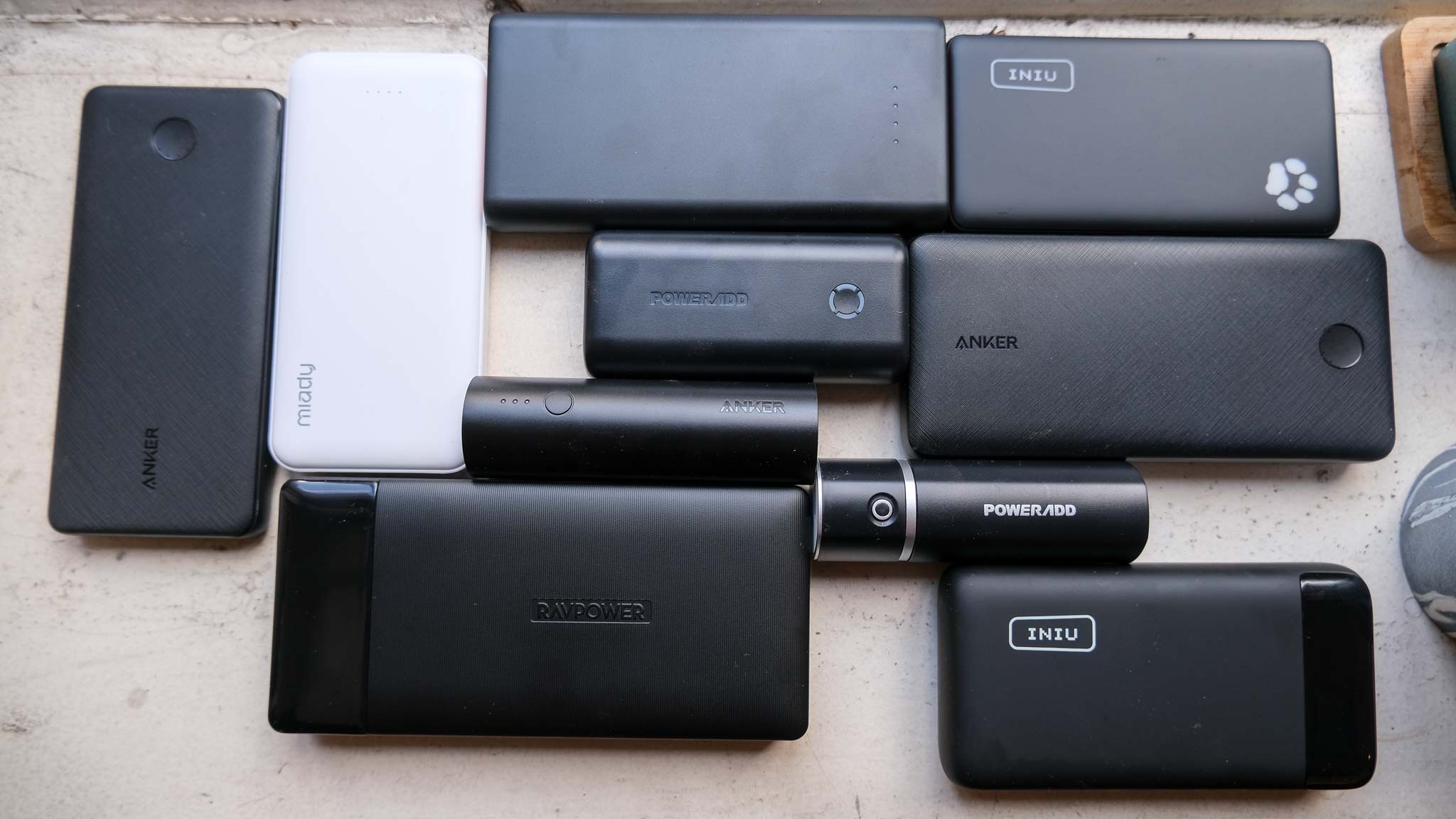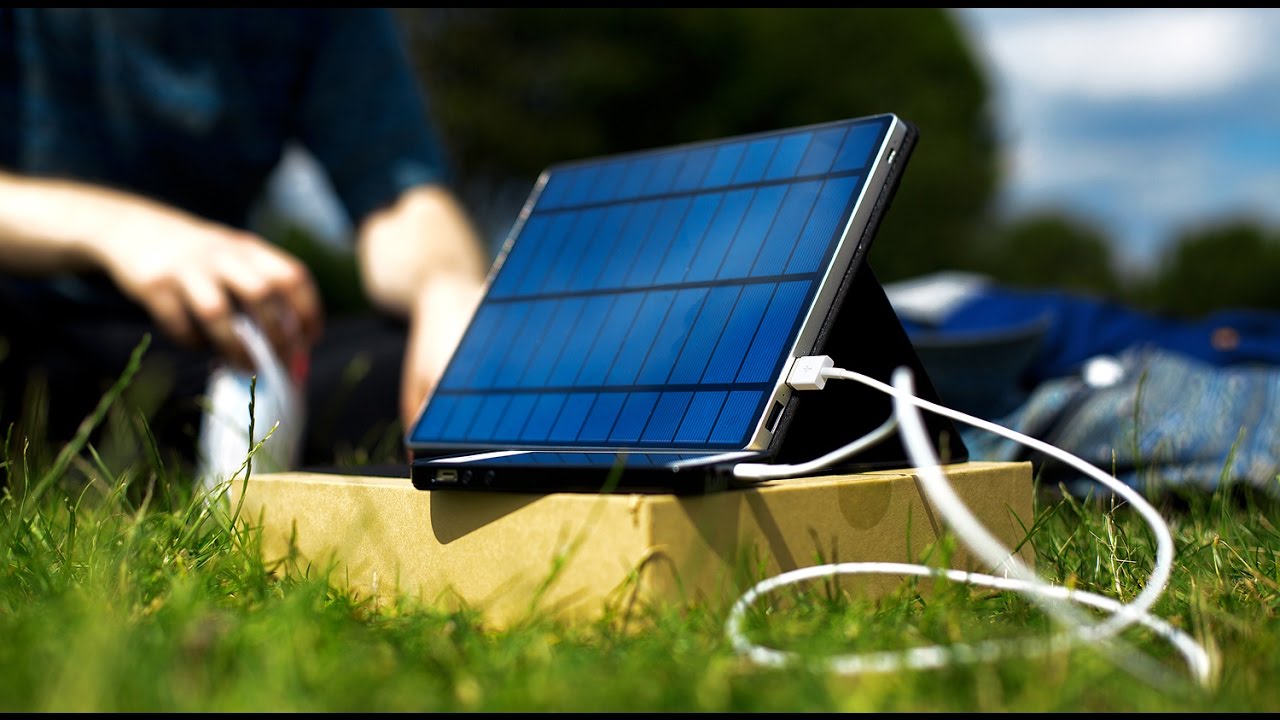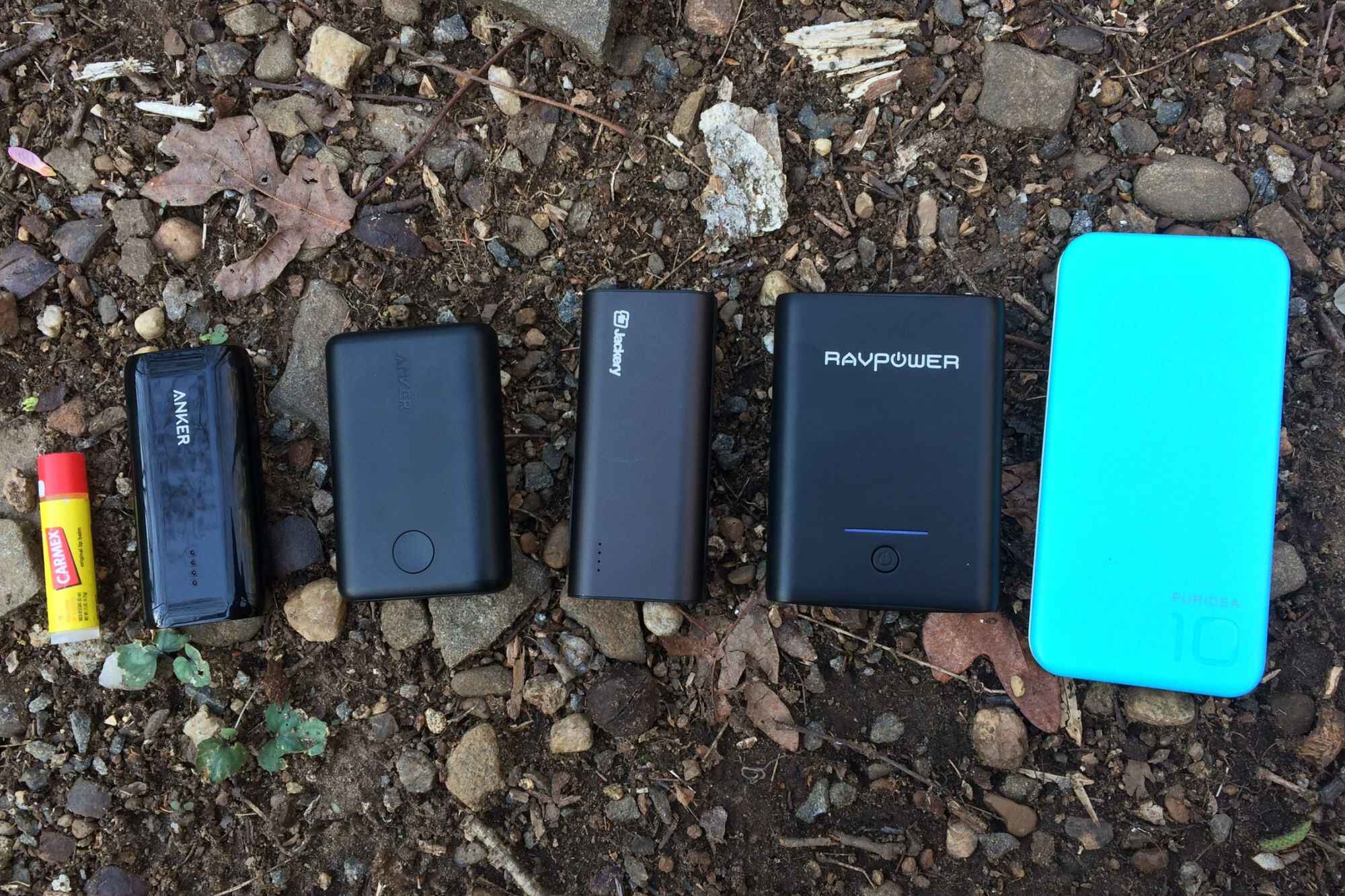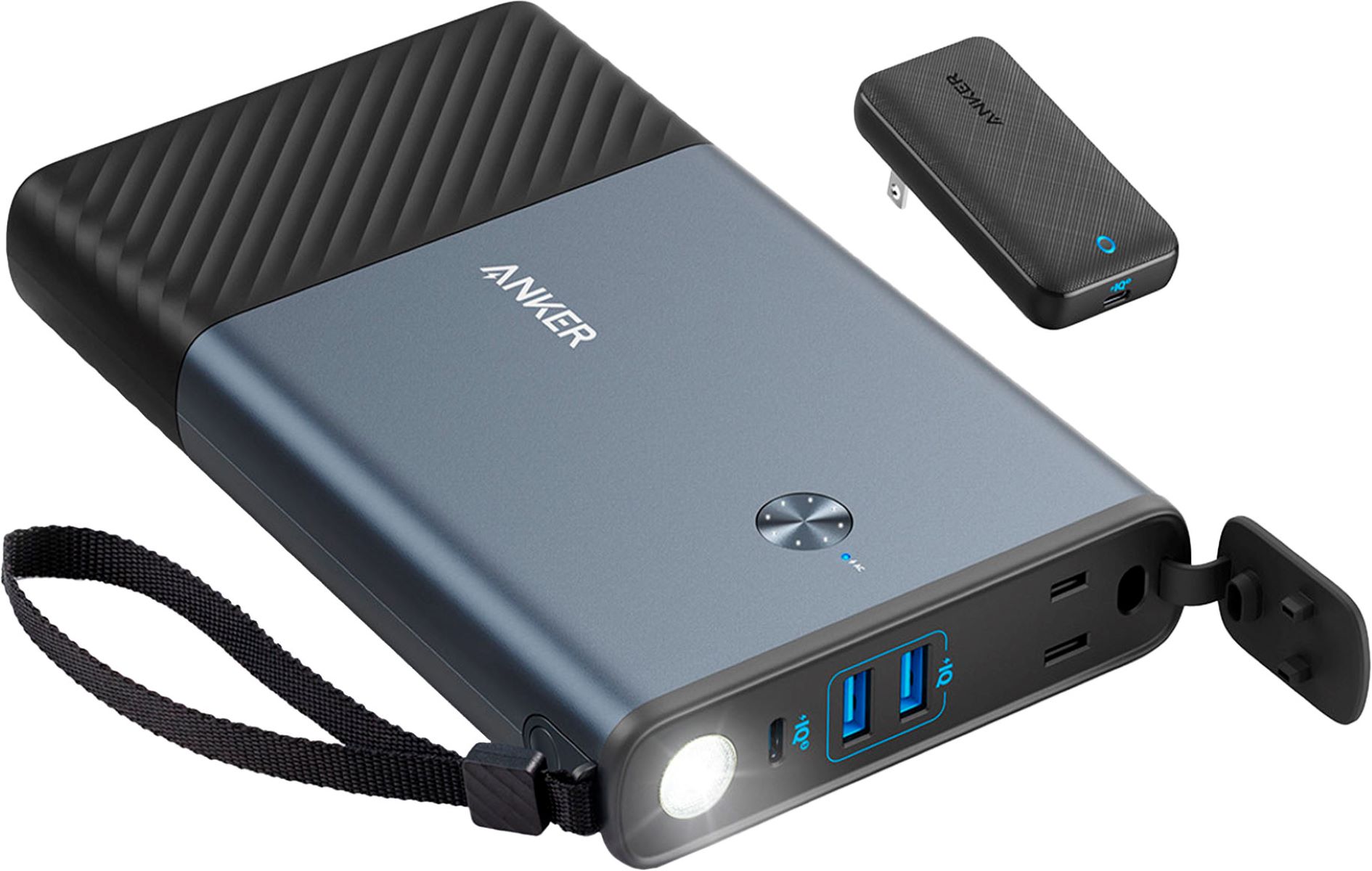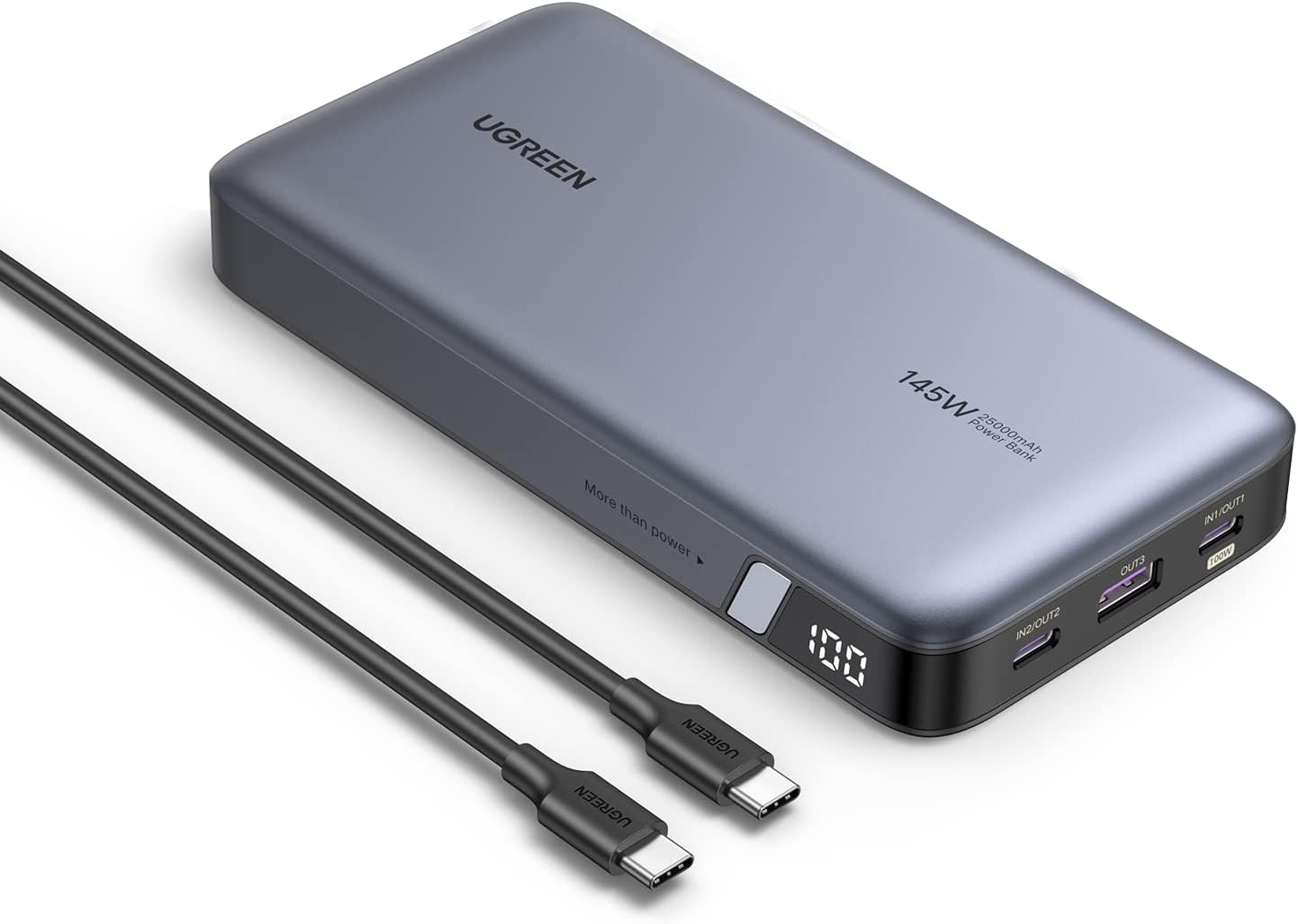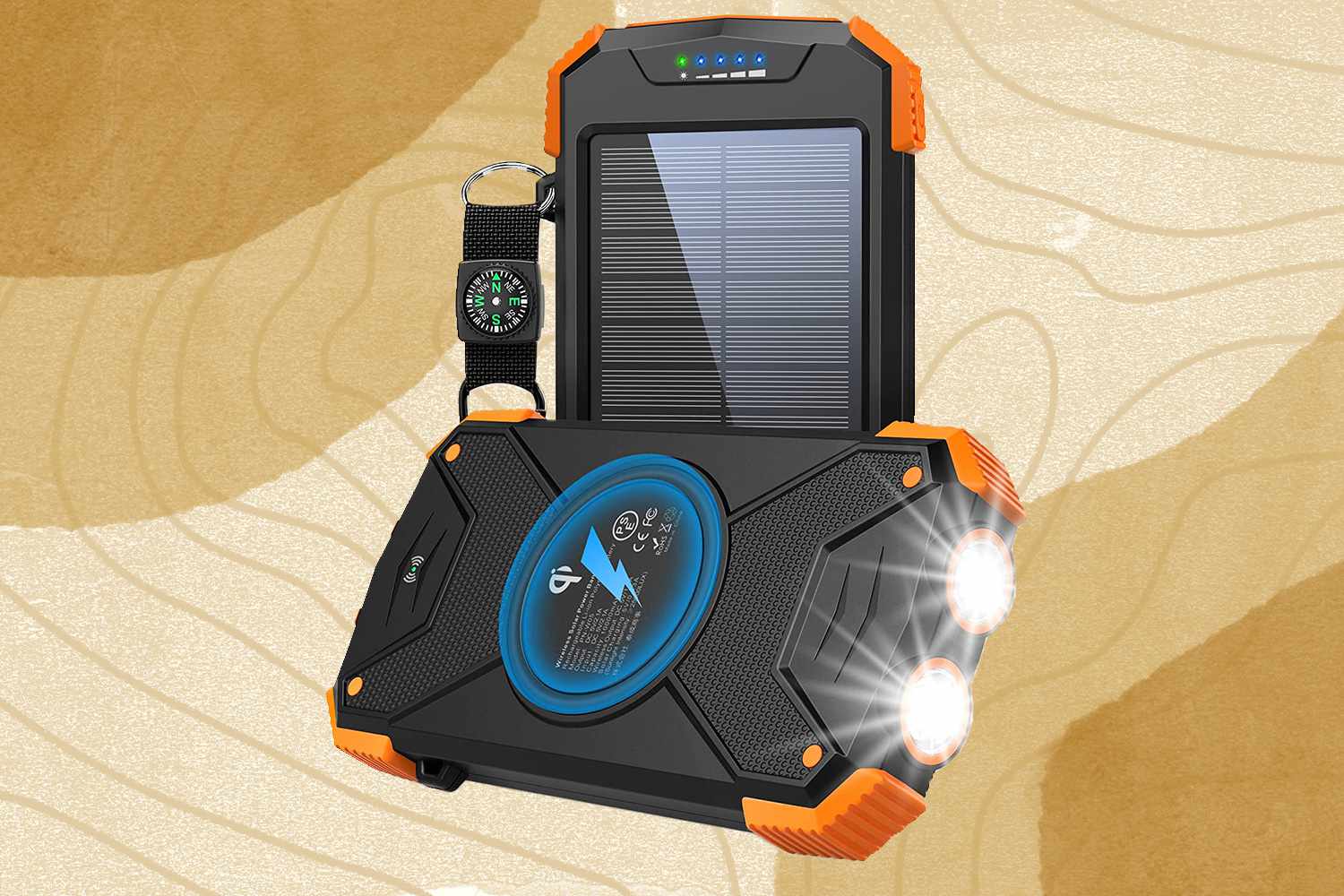Introduction
Welcome to our comprehensive guide on power bank charging time. In today’s fast-paced world, where our devices are constantly running out of battery, having a reliable power bank is a must. Whether you’re a busy professional, a frequent traveler, or simply someone who relies heavily on their smartphone or other portable gadgets, a power bank can be a lifesaver. But how long does it take for a power bank to charge?
The charging time of a power bank depends on several factors, including its capacity, the charging speed of the power source, and the type of charging technology used. Understanding these factors and their impact on charging time is essential to make informed decisions when purchasing and using a power bank.
In this guide, we will explore the various factors that affect the charging time of a power bank, the charging time for different power bank capacities, the impact of charging cables and adaptors on charging time, as well as the latest fast charging technologies. We will also provide some useful tips to help you reduce the charging time of your power bank and debunk some common myths surrounding power bank charging time.
Whether you’re looking to buy a new power bank, optimize the charging time of your existing one, or simply curious about how power banks work, this guide has got you covered. So, let’s dive in and discover everything you need to know about the charging time of power banks!
Factors that affect the charging time of a power bank
The charging time of a power bank can vary significantly depending on several factors. Understanding these factors is crucial to estimate how long it will take for your power bank to charge fully. Here are the key factors that can affect the charging time:
- Capacity of the power bank: One of the primary factors affecting the charging time is the capacity of the power bank. Higher-capacity power banks generally take longer to charge compared to lower-capacity ones. For example, a 10,000mAh power bank will take longer to charge than a 5,000mAh power bank.
- Charging speed of the power source: The charging speed of the power source used to charge the power bank also plays a significant role. If you connect your power bank to a wall adapter with a higher charging output, it will charge faster. For instance, a power bank connected to a wall adapter with a 2.4A output will charge faster than when connected to a 1A output.
- Quality of the charging cable and adaptor: The quality of the charging cable and adaptor used can impact the charging time. It’s recommended to use high-quality cables and adaptors that can handle higher voltage and current to minimize energy loss and maximize charging efficiency.
- Temperature: The temperature of the surrounding environment can affect the charging time. Charging a power bank in an extremely cold or hot environment can slow down the charging process. It’s advisable to charge the power bank in a moderate temperature environment for optimal charging speed.
- Charging status and efficiency: The current charging status of the power bank can also impact the charging time. In the initial stages of charging, the power bank can charge at a faster speed, and as it reaches a higher charge level, the charging speed may slow down to protect the battery and maintain its longevity.
By considering these factors, you can have a better understanding of how long it will take for your power bank to charge fully. However, it’s important to note that these are general guidelines, and charging times may vary between different power bank models and brands.
Charging time for different power bank capacities
The charging time of a power bank is directly influenced by its capacity. Power banks come in a variety of capacities, ranging from small portable ones to high-capacity models. Here’s a breakdown of the approximate charging time for different power bank capacities:
- Small Capacity (2,000mAh – 5,000mAh): Power banks with small capacities typically take around 2-3 hours to fully charge. These power banks are perfect for emergency use and can provide a single charge for most smartphones.
- Medium Capacity (5,000mAh – 10,000mAh): Power banks with medium capacities usually take around 3-5 hours to fully charge. These power banks offer multiple charges for smartphones and can also charge other small devices, such as smartwatches or Bluetooth earphones.
- High Capacity (10,000mAh – 20,000mAh): Power banks with high capacities generally take around 5-8 hours to fully charge. These power banks can provide multiple charges for smartphones, tablets, and even some laptops. They are ideal for travelers or those who heavily rely on their devices throughout the day.
- Ultra-High Capacity (20,000mAh and above): Power banks with ultra-high capacities may take around 8 hours or more to fully charge. These power banks can provide multiple charges for multiple devices and are suitable for extended trips or situations where access to power outlets is limited.
Keep in mind that the charging time can vary depending on the factors mentioned earlier, such as the charging speed of the power source and the quality of the charging cables and adaptors used. Additionally, some power banks may come equipped with fast charging technologies, which can significantly reduce the charging time.
It’s important to refer to the manufacturer’s specifications for your specific power bank model to get a more accurate estimation of its charging time. By understanding the charging time for different power bank capacities, you can better plan your charging routine and ensure that your devices always have sufficient power when you need them.
Impact of charging cables and adaptors on charging time
When it comes to charging a power bank, the quality of the charging cables and adaptors used can have a significant impact on the charging time. Here’s how these components can affect the charging speed:
Charging Cables:
Using a high-quality charging cable is essential for efficient power bank charging. The thickness and quality of the cable determine how much voltage and current can flow through it. Thin or low-quality cables may not be able to handle higher charging currents, leading to slower charging speeds and potential energy loss.
It’s recommended to use cables with a thicker gauge and good insulation to minimize energy loss and maximize charging efficiency. Additionally, ensure that the cables are undamaged and free from frayed wires, as this can also impact the charging speed.
Charging Adaptors:
The charging adaptor plays a crucial role in supplying the power bank with the necessary voltage and current for charging. The charging speed depends on the output capacity of the adaptor. Adaptors with higher output capacities, typically measured in amps (A), can deliver more current to the power bank, resulting in faster charging. For example, an adaptor with a 2.4A output will charge a power bank faster than one with a 1A output.
It’s important to use adaptors that are compatible with the power bank and have the recommended output capacity. Using an adaptor with lower output capacity than what the power bank requires may result in slower charging. However, be cautious not to use adaptors with significantly higher output capacities, as it may cause damage to the power bank or other connected devices.
By using high-quality charging cables and suitable adaptors, you can ensure efficient power bank charging and reduce the overall charging time. It’s advisable to use cables and adaptors provided by the power bank manufacturer or reputable brands to guarantee compatibility and optimal charging performance.
Fast charging technologies and their effect on charging time
In recent years, fast charging technologies have revolutionized the way we charge our devices, including power banks. These technologies enable quicker charging speeds, significantly reducing the time required to charge a power bank. Here are some fast charging technologies commonly found in power banks:
- Quick Charge: Quick Charge is a fast charging technology developed by Qualcomm. It utilizes a higher voltage to deliver more power to the device, resulting in faster charging times. Power banks equipped with Quick Charge technology can charge compatible devices at a much faster rate compared to traditional charging methods.
- Power Delivery: Power Delivery (PD) is a fast charging protocol designed to deliver higher power levels to devices. PD-enabled power banks can supply high power output to compatible devices, including smartphones, tablets, and laptops, allowing for faster charging compared to standard charging methods.
- Adaptive Fast Charging: Adaptive Fast Charging is a technology developed by Samsung. It dynamically adjusts the charging voltage and current to provide optimal charging speed, taking into account the device’s battery capacity and charging requirements. Power banks with Adaptive Fast Charging can charge compatible Samsung devices at significantly faster rates.
- USB-C PD: USB-C Power Delivery is a fast charging standard that utilizes the USB-C connector to deliver higher power levels. Power banks with USB-C PD support can charge a wide range of devices, including smartphones and laptops, at faster speeds, making them versatile options for charging various devices on the go.
Fast charging technologies can significantly reduce the charging time of power banks. However, it’s important to note that the device being charged must also support the fast charging technology for optimal results. The charging speed may vary depending on the compatibility between the power bank and the connected device.
When purchasing a power bank, consider opting for models that support fast charging technologies if you frequently need quick power-ups. Ensure that your devices are also compatible with the supported fast charging standards to take full advantage of the accelerated charging speeds.
Tips to reduce the charging time of a power bank
While the charging time of a power bank largely depends on its capacity and the charging source, there are a few tips and tricks that can help expedite the charging process. Here are some effective ways to reduce the charging time of your power bank:
- Use a high-power charging source: To speed up the charging process, connect your power bank to a high-power charging source, such as a wall adapter with a higher output capacity. The higher the current output, the faster your power bank will charge.
- Use fast charging cables: Invest in high-quality, fast charging cables that can handle higher currents without energy loss. These cables are designed to deliver maximum power to your power bank, reducing charging time. Look for cables with thicker gauges and ensure they are compatible with your power bank.
- Charge within the optimal temperature range: Extreme temperatures can affect the charging efficiency of your power bank. Charge it in a moderate temperature environment to prevent overheating or slowing down the charging process.
- Avoid using the power bank while charging: Using your power bank while it’s charging can slow down the charging speed. To speed up the process, refrain from using the power bank, and let it charge undisturbed.
- Turn on airplane mode on your devices: When charging your devices using a power bank, activate airplane mode or turn off unnecessary features like Wi-Fi, Bluetooth, and location services. This reduces the power consumption of your devices, helping them charge faster.
- Charge overnight or during periods of inactivity: If you’re not in a hurry, consider charging your power bank overnight or during times when you do not need immediate access to your devices. This allows for a longer charging period, ensuring your power bank reaches full capacity.
By following these tips, you can maximize the charging speed of your power bank and ensure that it is always ready to provide portable power whenever you need it. Remember, while these tips can help reduce charging time, it’s essential to use them in combination with a compatible power source and quality charging cables for optimal results.
Common myths about power bank charging time
There are several misconceptions and myths surrounding power bank charging time. These myths often lead to confusion and misinformation. Let’s debunk some of the most common myths about power bank charging time:
- Myth 1: Charging a power bank for longer will damage it: This is a common misconception. Power banks are designed to handle the charging process safely. Once the power bank reaches full capacity, it automatically stops charging, preventing overcharging and potential damage.
- Myth 2: Charging a power bank at a higher current will damage it: Power banks are designed to handle different charging currents. Charging a power bank at a higher current, as long as it is within the recommended limits, will not damage it. The charging circuitry inside the power bank is responsible for regulating the charging current and protecting the battery.
- Myth 3: Charging a power bank overnight will lead to overcharging: This is not true. Power banks are equipped with built-in mechanisms to prevent overcharging. Once the power bank reaches full capacity, it automatically stops charging. You can safely leave your power bank connected overnight without worrying about overcharging.
- Myth 4: Using a power bank while charging will damage it: Another common misconception is that using a power bank while it’s charging can cause damage. This is not true. Power banks are designed to support simultaneous charging and discharging. You can use your devices connected to the power bank while it’s being charged without any harm to the power bank or the devices.
- Myth 5: All power banks charge at the same speed: Power banks come with different charging speeds depending on their capacity, charging technology, and compatibility with devices. Fast charging technologies, such as Quick Charge or Power Delivery, can significantly reduce the charging time of a power bank compared to traditional charging methods.
It’s important to separate fact from fiction when it comes to power bank charging time. Understanding the capabilities and limitations of power banks can help you make informed decisions and ensure the optimal usage of your power bank.
Conclusion
Power banks have become essential devices for individuals on the go, providing portable power for our ever-dependable smartphones, tablets, and other gadgets. The charging time of a power bank is influenced by various factors such as its capacity, the charging speed of the power source, and the quality of the charging cables and adaptors used.
By understanding these factors, you can estimate the charging time of your power bank and plan your charging routine accordingly. Additionally, fast charging technologies like Quick Charge, Power Delivery, and Adaptive Fast Charging can significantly reduce the charging time and offer faster power-ups.
To optimize the charging time of your power bank, consider using high-power charging sources, fast charging cables, and charging within the recommended temperature range. Avoid using the power bank while it’s charging, and turn on airplane mode on your devices to reduce power consumption. Charging overnight or during periods of inactivity can also ensure that your power bank reaches full capacity.
It’s important to debunk common myths surrounding power bank charging time, such as the misconception that charging a power bank for longer or at higher currents will cause damage. Power banks are designed with built-in protections to prevent overcharging and handle varying charging currents.
By following these guidelines and dispelling the myths, you can make the most of your power bank and enjoy its portable power capabilities without unnecessary worries. So, charge up your power bank and stay connected wherever you go!







